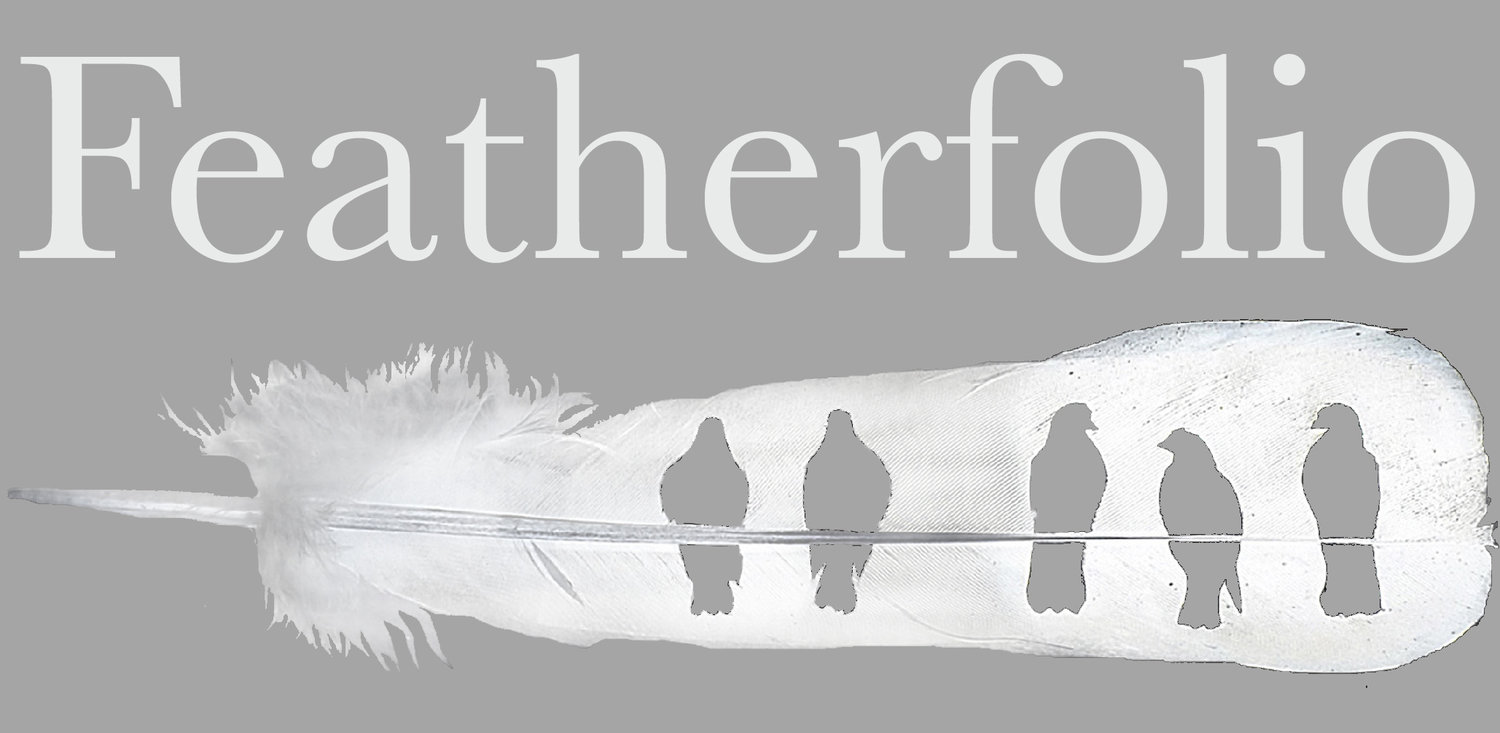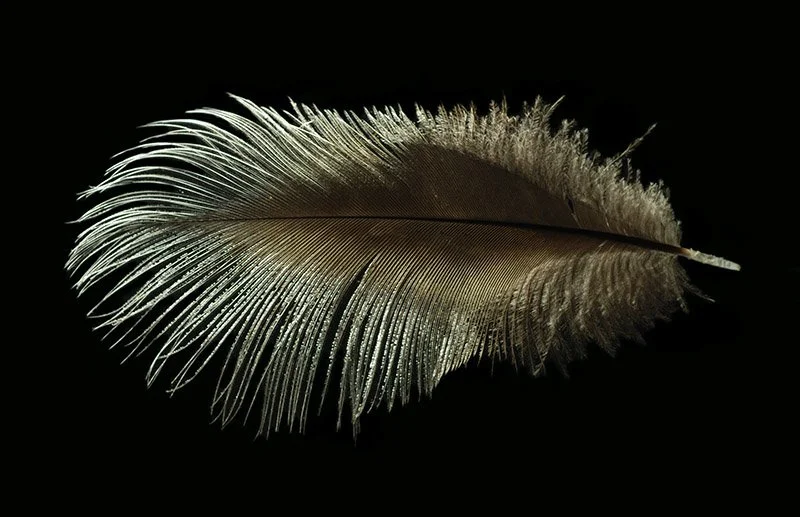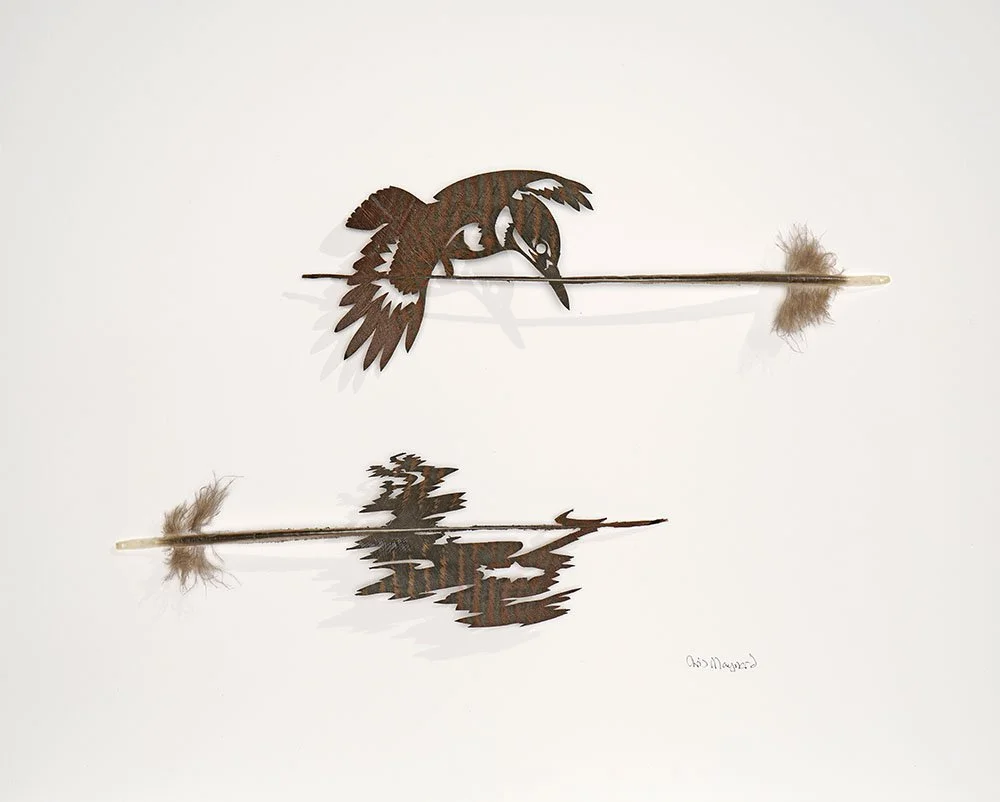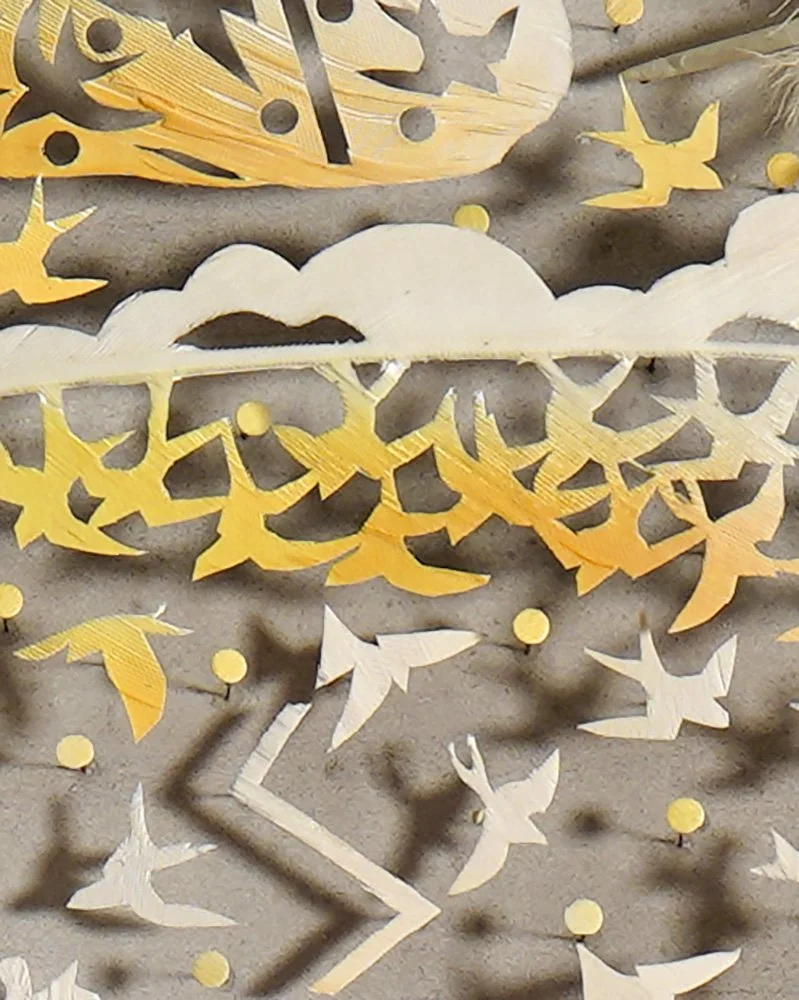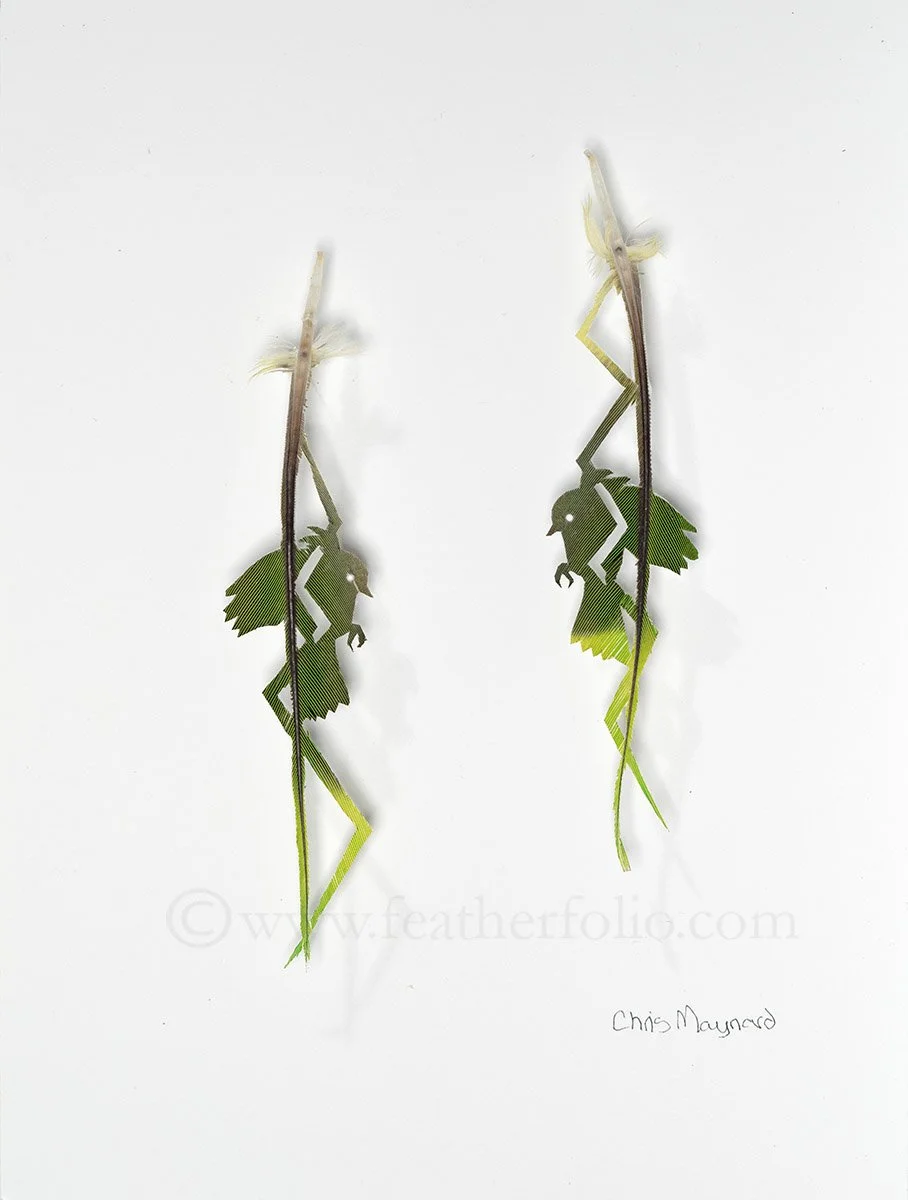Each piece is a result of a long and careful series of eleven steps before it finds itself completed.
1. Inspiration comes from many sources, some take longer than others. It might be a two-week trip to see a particular bird or it might come from a flash of insight from casual conversation.
2. Obtaining feathers takes years. I like molted feathers from aviary birds. I am fortunate to know dedicated people who take the time to pick the feathers up and send them to me. Some feathers are harder to come by than others. Also, I pay close attention to the laws about which feathers are legal to have and to sell in artwork.
3. Selecting feathers. Damaged plumes are not usable and often, the majority of feathers I get are in some way damaged. Each bird’s say 10,000 feathers are of all different sizes and colors and I need the exact right size, pattern, and color.
4. Preparing the feathers. The feathers in perfect shape get washed and sanitized. Each feather gets preened, kind of like the bird does it to make sure the barbs are all interlocking. Most body feathers have a little plume called an aftershaft which I usually, but not always remove. The cutout feathers are backed with a combination of glues, papers and pressure.
5. Designing the layout happens throughout the process but it helps to have the feathers ready in hand to get a feel for the dimensions which are dependent on the size of the feathers.
6. Making the design. I begin with a simple sketch, which I may have jotted down previously. Then I refine the sketch and place it in the computer. I take a picture of the feather and put it in the computer and size the sketch to fit the feather. This becomes my template for cutting.
7. Cut the feather.
8. Making the background which is usually archival quality foam core with laminated white cotton papers.
9. Arrange everything on the background because the feather and the cutouts are my only lines and shapes, the layout step is very important to end up with a pleasing unity.
10. 1Mounting the feathers is a process of gluing and pinning to the background.
11. Final steps of photographing and framing
